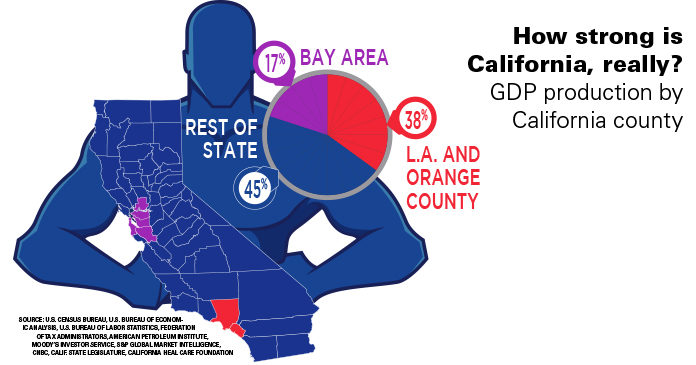California is the sixth biggest economy in the world according to the U.S. Bureau of Economic Analysis. Legislators like to tout that fact.
They often forget to add that the state also has both the highest poverty rate, homeless population and tax rate in the country. One out of every five California residents is poor according to the Census Bureau’s Supplemental Poverty Measure. With 12 percent of the country’s population, California is also home to a third of the country’s welfare recipients.
How is it that alongside these dismal statistics, California’s per-capita GDP increased at twice the rate of the nation’s in the five years up to 2016 (California: 12.5 percent; U.S.: 6.27 percent)?
If throwing money at the problem of homelessness was the solution, the Golden State would have solved it long ago. Los Angeles County voters approved a quarter cent sales tax to battle its homeless problem just a year ago. It was estimated Measure H would raise $355 million a year in revenue. Its passage followed that of Measure HHH the previous year to issue $1.2 billion in bonds for the construction of homes and shelters. Prior to that, state and local governments spent about $958 billion (1992 through 2015) on public welfare programs according to the Census Bureau. The net result?
California’s homeless problem has “never been worse,” and state officials aren’t doing enough to reduce the number of people living without shelter, Lt. Gov. Gavin Newsom said last week. Homelessness is “out of control,” he said. “It’s happened on our watch. We own it.”
California’s lack of welfare reform and active opposition to a work requirement, may play a role in the state’s plight. Economists like William A. Niskanen suggest the lack of reform is due to the state’s interest in protecting its power base, which encompasses an enormous bureaucracy. California employs over a million full-time equivalent state and local employees by some accounts.
State policies continue to push the already inadequate number of available housing units downward, while driving prices higher. The latest initiative, a statewide push toward rent control, has caused some investors to sell off their California portfolios, only to purchase properties in other states. Others have stopped all asset purchases in the state as they wait to see if the rent control measure passes in November.
How dire can California’s affordable housing situation get? We may be about to find out.
















